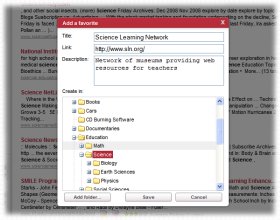|
Education
Web
Viewing 1-4 of 4 total results
for History PO 1. Use the following to interpret historical data: a. timelines – B.C.E. and B.C.; C.E. and A.D. b. graphs, tables, charts, and maps PO 2. Construct timelines of the historical era being studied (e.g., presidents/ world leaders, key events, people). PO 3. Descr...
1
0
for History PO 1. Use the following to interpret historical data: a. timelines – B.C.E. and B.C.; C.E. and A.D. b. graphs, tables, charts, and maps PO 2. Construct timelines of the historical era being studied (e.g., presidents/ world leaders, key events, people). PO 3. Describe the difference between primary and secondary sources. PO 4. Locate information using both primary and secondary sources. PO 5. Describe how archaeological research adds to our understanding of the past
75
0
http://www.ade.state.az.us/standards/sstudies/articulated/SSStandard-full-05-22-06.pdf#page=75
www.ade.state.az.us/standards/sstudies/articulated/SSStandard-full-05-22-...
<span class="highlight">for</span> History PO 1. Use the following to interpret historical data: a. timelines – B.C.E. and B.C.; C.E. and A.D. b. graphs, tables, charts, and <span class="highlight">maps</span> PO 2. Construct timelines of the historical era being studied (e.g., presidents/ world leaders, key events, people). PO 3. Describe the difference between primary and secondary sources. PO 4. Locate information using both primary and secondary sources. PO 5. Describe how archaeological research adds to our understanding of the past
list examples of human/environmental interaction on a T chart. • 8.3.tpi.3. use the key elements of maps, charts, graphs, and other representations to read and understand the early Colonial American information presented. • 8.3.tpi.4. draw on a map the major topographic and p...
1
0
list examples of human/environmental interaction on a T chart. • 8.3.tpi.3. use the key elements of maps, charts, graphs, and other representations to read and understand the early Colonial American information presented. • 8.3.tpi.4. draw on a map the major topographic and political features of the United States relevant to early American history. • 8.3.tpi.5. research and describe specific instances where humans have shaped or been shaped by the environment. at Level 2, the student is able to • 8.3
9
0
http://www.state.tn.us/education/ci/ss/doc/SS_Grade_8.pdf#page=9
www.state.tn.us/education/ci/ss/doc/SS_Grade_8.pdf#page=9
list examples of human/environmental interaction on a T chart. • 8.3.tpi.3. use the key elements of <span class="highlight">maps</span>, charts, graphs, and other representations to read and understand the early Colonial American information presented. • 8.3.tpi.4. draw on a map the major <span class="highlight">topographic</span> and political features of the United States relevant to early American history. • 8.3.tpi.5. research and describe specific instances where humans have shaped or been shaped by the environment. at Level 2, the student is able to • 8.3
Grades 1 and 2 (continued) ❚ Tell time at quarter-hour intervals on analog and digital clocks using a.m. and p.m. DATA ANALYSIS, STATISTICS, AND PROBABILITY ❚ Use interviews, surveys, and observations to gather data about themselves and their surroundings. ❚ Organize, cla...
1
0
Grades 1 and 2 (continued) ❚ Tell time at quarter-hour intervals on analog and digital clocks using a.m. and p.m. DATA ANALYSIS, STATISTICS, AND PROBABILITY ❚ Use interviews, surveys, and observations to gather data about themselves and their surroundings. ❚ Organize, classify, represent, and interpret data using tallies, charts, tables, bar graphs, pictographs, and Venn diagrams, and interpret the representations. ❚ Formulate inferences (draw conclusions) and make educated guesses (conjectures
130
0
http://www.doe.mass.edu/frameworks/hss/final.pdf#page=130
www.doe.mass.edu/frameworks/hss/final.pdf#page=130
Grades 1 and 2 (continued) ❚ Tell time at quarter-hour intervals on analog and <span class="highlight">digital</span> clocks using a.m. and p.m. DATA ANALYSIS, STATISTICS, AND PROBABILITY ❚ Use interviews, surveys, and observations to gather data about themselves and their surroundings. ❚ Organize, classify, represent, and interpret data using tallies, charts, tables, bar graphs, pictographs, and Venn diagrams, and interpret the representations. ❚ Formulate inferences (draw conclusions) and make educated guesses (conjectures
Microsoft Word - ssstdg.docssstdg.pdf
through which a territory and its people are ruled. Graphic representations - maps and graphs used to portray geographic information (thematic and choropleth maps, cartograms, graphs [pie, bar, line, population pyramids]). Gross Domestic Product (GDP) - the total market value...
1
0
through which a territory and its people are ruled. Graphic representations - maps and graphs used to portray geographic information (thematic and choropleth maps, cartograms, graphs [pie, bar, line, population pyramids]). Gross Domestic Product (GDP) - the total market value of all final goods and services produced in the economy in a given year. H Human capital, human resource - people who work in jobs to produce goods and services. Human feature (human characteristics) - items built by people
1
0
http://www.ksde.org/LinkClick.aspx?fileticket=%2beMPIocNZJg%3d&tabid=1715&mid=8016&forcedownload=true#page=6
www.ksde.org/LinkClick.aspx?fileticket=%2beMPIocNZJg%3d&tabid=1715&mid=80...
through which a territory and its people are ruled. Graphic representations - <span class="highlight">maps</span> and graphs used to portray geographic information (thematic and choropleth <span class="highlight">maps</span>, cartograms, graphs [pie, bar, <span class="highlight">line</span>, population pyramids]). Gross Domestic Product (GDP) - the total market value of all final goods and services produced in the economy in a given year. H Human capital, human resource - people who work in jobs to produce goods and services. Human feature (human characteristics) - items built by people
|
